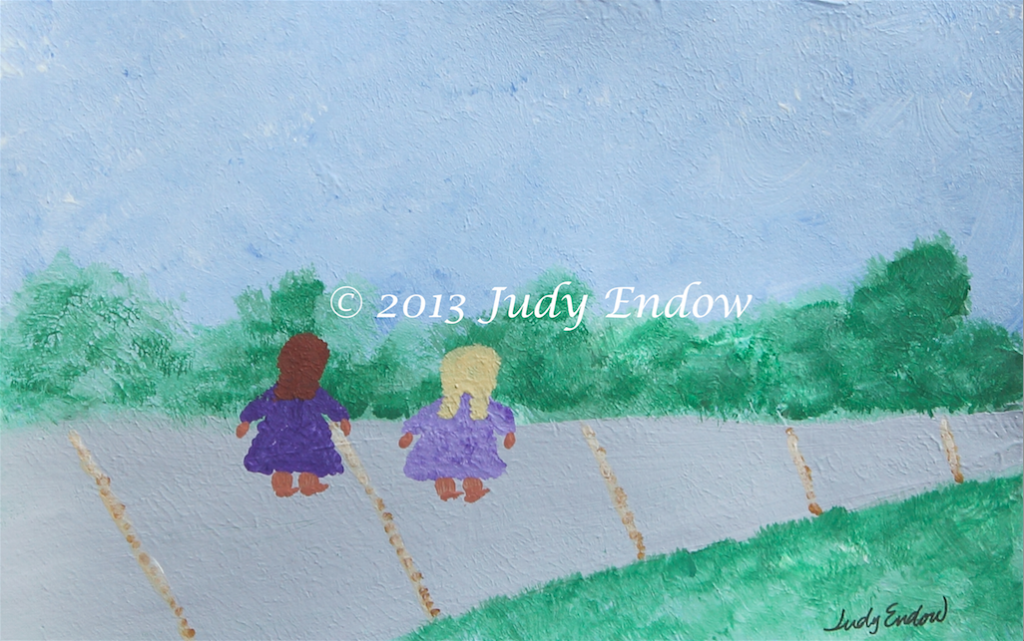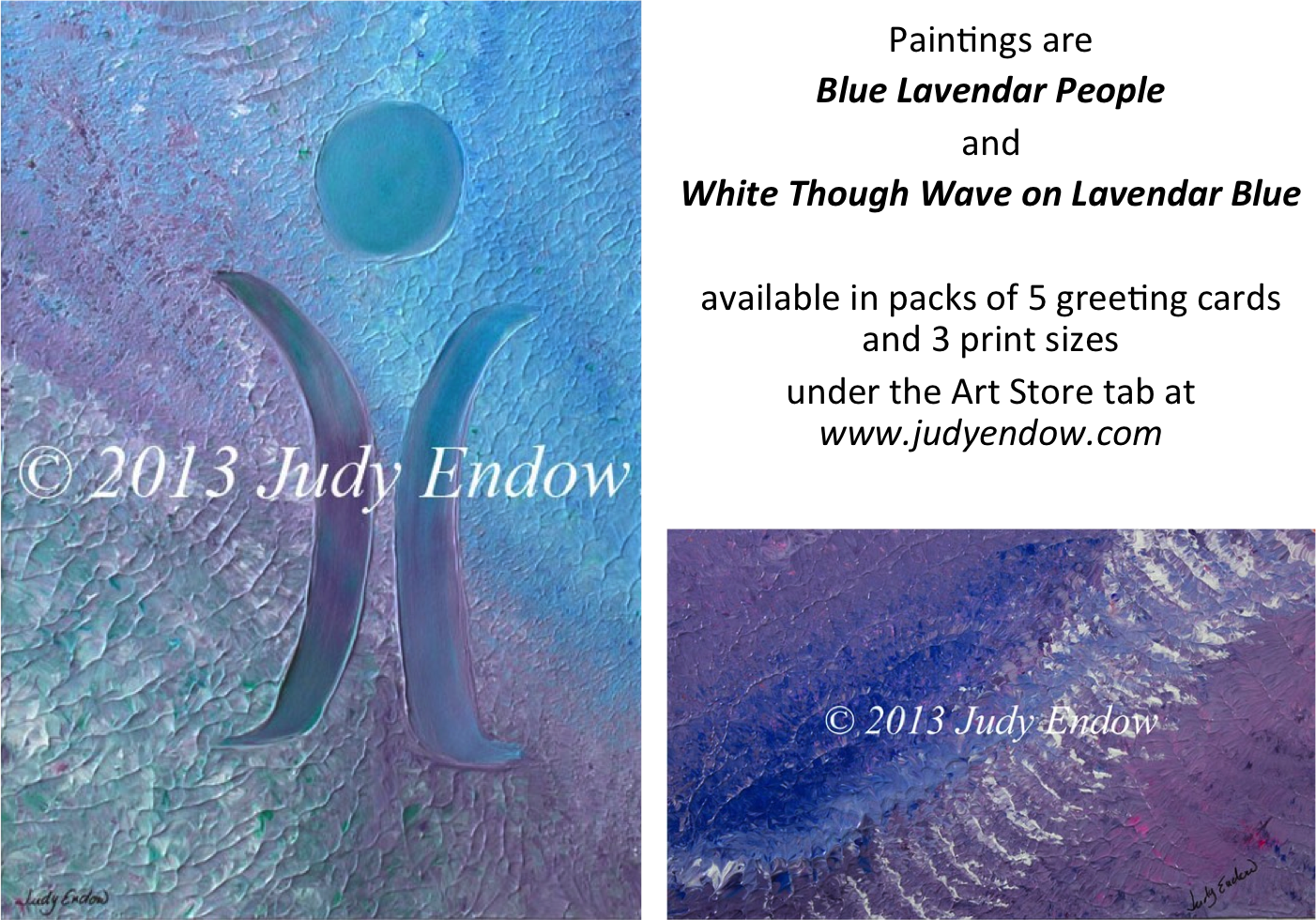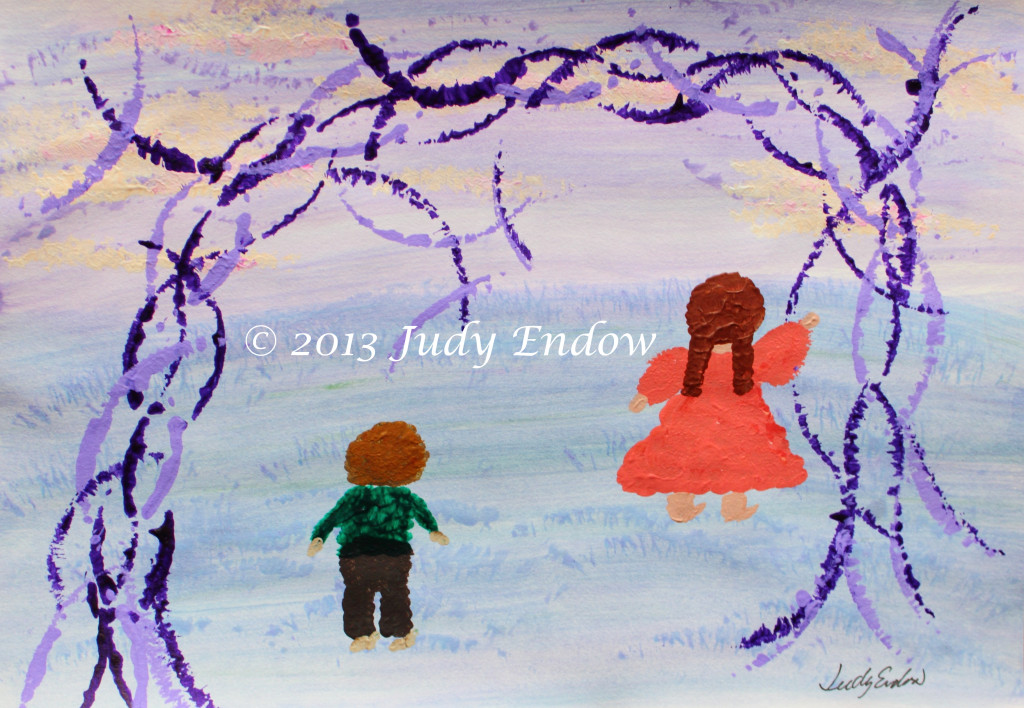In this life I am missing the ability to go out into the world and just be accepted for my natural autistic self. I must inhibit so many of my natural responses just to fit in enough for others to allow me a place in the world. I have discovered that to have a place in this world I need to fit into it in a way that makes sense to the majority. For me, this isn’t a good or a bad thing – just merely the way it is. Fitting into the world is something I need to balance with the essence of my being so as to come out in the most positive manner possible.
A few years ago I took a pottery class for adults – not disabled adults – just plain ordinary adults. I explained my obvious-at-the-time movement differences in terms of my autism. Several weeks later out of the blue, a fellow potter asked, “So Judy, are you high-functioning?”
In the context of working on my hand built sculpture, surrounded by others using potter’s wheels I replied, “Some days. And you?”
My question was never answered. Only silence followed. It wasn’t until I was on my way home that I figured out the question was meant to be in reference to my autism – not to my sculpture building abilities!
Many times when I disclose my autism the first question I am asked is whether I am high-functioning or low-functioning. People are not at all meaning to be rude, but rather, just trying to understand what they think is important about me.
In reality high-functioning and low-functioning are not real labels, having no definition, no skill set lists, and no diagnostic criteria. Yet these words are often used to determine opportunities that will be denied or extended to an autistic and in assigning the correct amount of personal responsibility and blame to an autistic for the way his autism plays out in everyday life.
Even though high-functioning is not a real thing and even though I am embarrassed to admit this, I would rather be seen as high-functioning than as low-functioning as this somehow has come to mean that others see me as a better human being. I have discovered the more I can look like a neuro-majority person the more opportunities I am given in life.
I now manage my own business that includes quite a bit of traveling and public speaking. By planning several days of quiet downtime before traveling I am able to inhibit my natural tendencies and perform for up to several days at a time. While this is great in that it enables me to be a financially independent human being, it also makes me to understand that the real of me is largely unacceptable in society at large.
This real of me is nothing more than my low-functioning ways! Some of my friends tell me that I do not need to inhibit my natural self when I am with them. For these friends who tolerate the real of me – even though they want to tolerate it – it is difficult for them. In addition, I have learned along the way that if I take them up on their offer that they, in turn, will limit their time with me because my natural ways exhaust and drain them. They are not bad people – it is simply the way their neurology as a neuro-majority person plays out for them.
To me this is one of the hardest things about autism. It is hard for everyone. And yet, I have some real friends in this life. Together, we tend to adore each other’s essence – that “stuff” that makes us who we are – while working out the challenges that physical proximity often brings to our friendship. We may not always look like typical friends, but we connect by the steel-strong threads that run between our souls. It is this connection that makes the meaningfulness in our friendship rather than our outward social graces.So, high-functioning or low-functioning? It is often the first question asked when my autism is disclosed. I now answer, “Yes, I am.” It is the truth and it weeds out the interested masses from a future potential friend!
Suggestions for Supporting a Child to Fit In While Valuing Who He Is
- Implement planned down time before outings or events where your child will be required to be around others.
- Think through options of how your child might “fit in” so that he is more likely to succeed in a variety of ways rather than to fail if he is not able to act as the world expects.
Example: At a family gathering options might include:
1) being in the main area of the house interacting with the guests
2) sitting off to the side in the main area of the house playing on his iPad
3) inviting one cousin to play iPad games on the extra iPad in the den that has been closed off to guests.
- Provide opportunities for your child to participate in social events that are neurologically friendly to him such as visiting a sensory friendly Santa or going to sensory friendly movie theater. The idea is to balance the “fitting in” with times of honoring who he is, setting up enjoyable opportunities that don’t include the challenges that make it difficult for him to fit in with crowds.
- Remember being social is not rewarding in and of it self for most autistics. It is hard work. Consider rewarding this as you would reward any accomplishment of hard work.
- Provide access to other children on the spectrum so your child can experience a sense of community while free to be himself.
BOOKS BY JUDY ENDOW
Endow, J. (2019). Autistically Thriving: Reading Comprehension, Conversational Engagement, and Living a Self-Determined Life Based on Autistic Neurology. Lancaster, PA: Judy Endow.
Endow, J. (2012). Learning the Hidden Curriculum: The Odyssey of One Autistic Adult. Shawnee Mission, KS: AAPC Publishing.
Endow, J. (2006). Making Lemonade: Hints for Autism’s Helpers. Cambridge, WI: CBR Press.
Endow, J. (2013). Painted Words: Aspects of Autism Translated. Cambridge, WI: CBR Press.
Endow, J. (2009). Paper Words: Discovering and Living With My Autism. Shawnee Mission, KS: AAPC Publishing.
Endow, J. (2009). Outsmarting Explosive Behavior: A Visual System of Support and Intervention for Individuals With Autism Spectrum Disorders. Shawnee Mission, KS: AAPC Publishing.
Endow, J. (2010). Practical Solutions for Stabilizing Students With Classic Autism to Be Ready to Learn: Getting to Go. Shawnee Mission, KS: AAPC Publishing.
Myles, B. S., Endow, J., & Mayfield, M. (2013). The Hidden Curriculum of Getting and Keeping a Job: Navigating the Social Landscape of Employment. Shawnee Mission, KS: AAPC Publishing.
Originally written for and published by Ollibean on February 1, 2015




